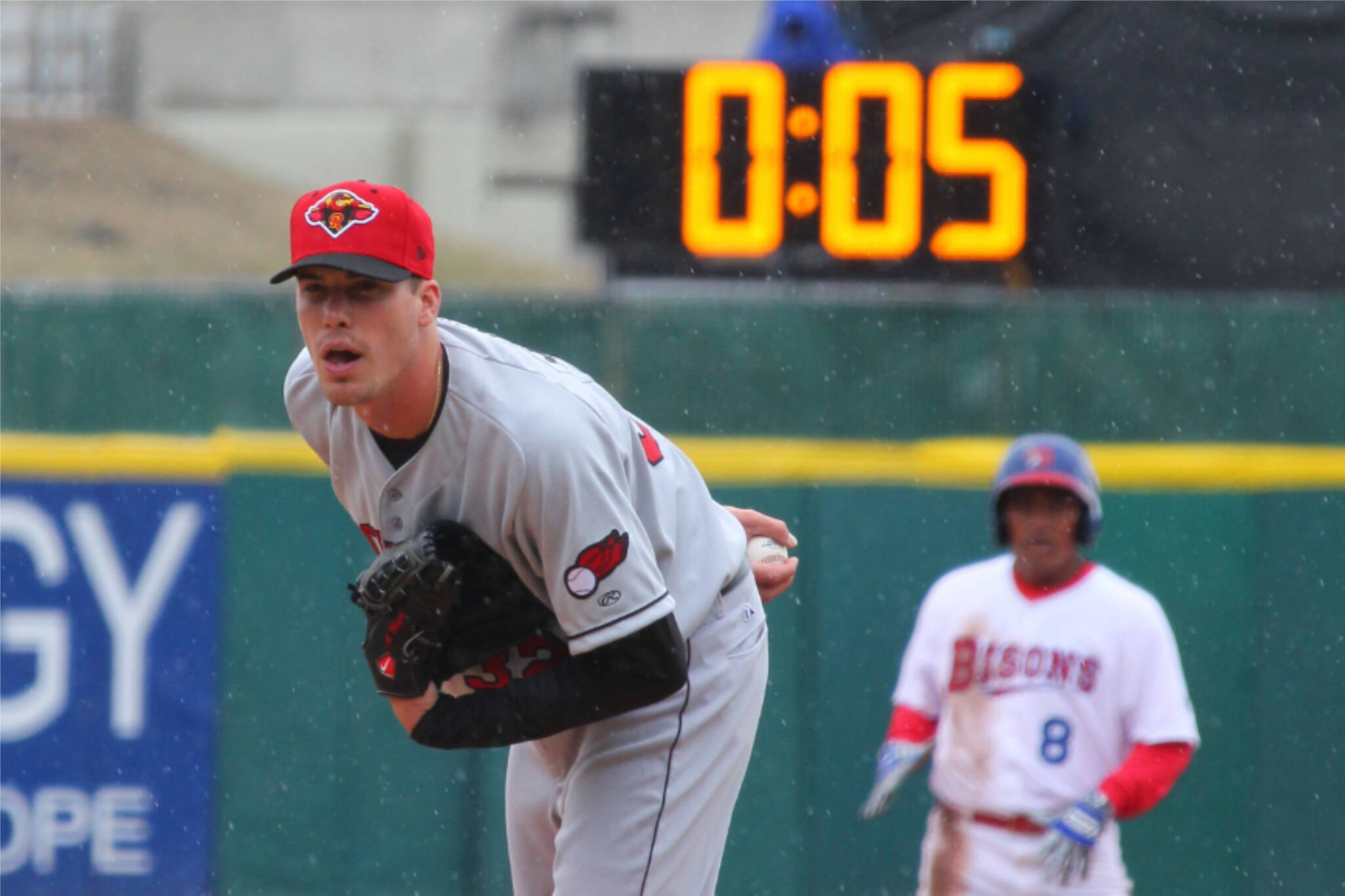If you’re headed out to Funko Field to take in an Everett AquaSox game, I have one piece of advice for you:
Don’t look down, you may miss something important.
Last Friday I made the trek to Funko Field for the Sox’s game against the Tri-City Dust Devils to see what kind of effect the new rules — specifically those designed to speed up the pace of play — were having on the game. I’d attended the season opener in April, but at that point the new rules were still in beta testing, meaning their full weight wasn’t yet felt. Now, two months into the season, those rules are operating at 100%, allowing for a truer sense of their impact.
It didn’t take long to experience the difference. In the top of the first inning I was glancing at the screen of a computer near me in the press box that was tracking pitches, looking to see what kind of velocity Everett starter Juan Mercedes was registering with his fastball, when I heard the distinctive thwack of bat connecting with ball, and I jerked my head back to the field in a vain attempt to locate where the play was happening.
Indeed, the new rules implemented this season in the Northwest League have transformed the spectator experience, both for good and ill.
Over the offseason Major League Baseball decided to implement experimental rules across the minors designed to address the length of games, increase action and improve player safety. The most prominent of those was the addition of a pitch clock, thus limiting the amount of time between pitches. When there are no baserunners pitchers have 14 seconds from the time they receive the ball to deliver the pitch. That increases to 18 seconds with runners on. Meanwhile, the batter needs to be set in the batter’s box with nine seconds remaining on the clock. A violation by the pitcher results in a ball and a violation by the batter results in a strike.
What I discovered Friday is that what was once as slow saunter through the park has turned into a track meet. Gone are the days of pitchers shaking off signs and stepping off the rubber, of batters stepping out of the box to adjust their batting gloves and shirt sleeves. In its place are at bats that look like they’re being replayed at double speed.
Just how much of a difference have the new rules made? Everett broadcaster Pat Dillon did some research earlier in the season, thumbing through past box scores to answer that question. Last year the Sox averaged 3 hours, 20 minutes for a nine-inning game, an obscenely long time. Through about the first month of this season Everett was averaging 2:37 for a nine-inning game. That’s an astounding 43-minute change.
Based on what I saw Friday I understood why. But that was just one game. So I decided to chat with some longtime members of the Sox organization to get their take on which aspects of the new rules were having the most effect.
Dillon cited the pitch clock, but he credited the batters more than the pitchers, saying the batters were no longer wasting any time. On Friday batters adjusted their feet between pitches, but they no longer stepped out of the box at all, and the pitch was often delivered with eight seconds still on the clock.
Public address announcer Tom Lafferty mentioned the shorter time between innings being a factor. Now the moment an inning ends, 2:15 is put on the clock to limit the between-inning time, and in most instances play resumed well before the clock reached zero. Lafferty lamented the fact between-inning activities and announcements now feel more rushed, and that the radio broadcast regularly come back from commercial with a couple pitches having already been thrown.
General manager Danny Tetzlaff also cited the batters and the time between innings. He said that for his purposes games were now going too fast, as concession sales have suffered because of the shorter length of games.
On-field host Steve Willits laughed about the fact he’s more out of breath these days as he races around the stadium to get in position for the next between-inning promotion. But despite the frenetic pace Willits, who also broadcasts the road games, said the shorter games were better than the long ones, and he noticed that more fans were staying to the game’s conclusion than in the past.
My own observation from opening night was that the rule limiting the number of pickoff attempts to two per plate appearance was a big factor in speeding up the game. I didn’t get much chance to test that theory Friday as the game, which Tri-City won 2-0, didn’t feature many baserunners. I will say, however, that the pace of play did slow noticeably when runners were on, as pitchers were more inclined to let the clock wind down
When Everett’s Alberto Rodriguez was called out on strikes to end the game, Lafferty announced the length of the game as a brisk 2:03. This despite rainy conditions that forced short delays as batters dug mud out of their spikes and quick dry was poured onto the mound. Sure, the fact there were only eight base hits and two runs scored played a role, but it was impossible to ignore the effect of the new rules.
Personally, I like the faster games. And if you thought baseball games had gotten interminably long, I suspect you’ll wholeheartedly endorse the rule changes, too.
Just make sure you keep your eyes up. That next pitch is already on it’s way.
Follow Nick Patterson on Twitter at @NickHPatterson.
Talk to us
> Give us your news tips.
> Send us a letter to the editor.
> More Herald contact information.

























